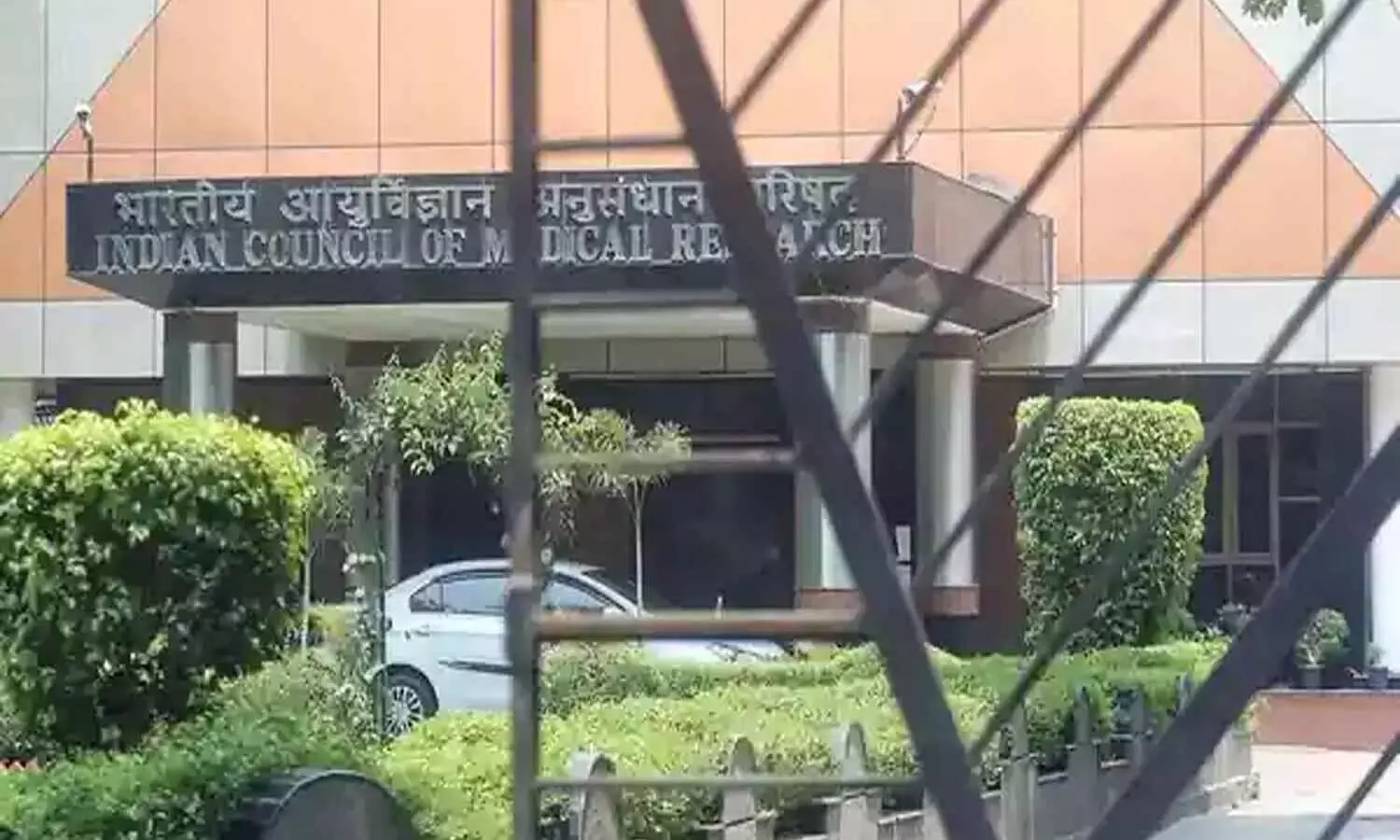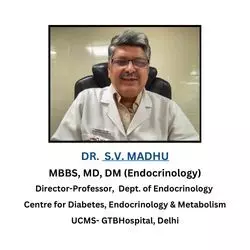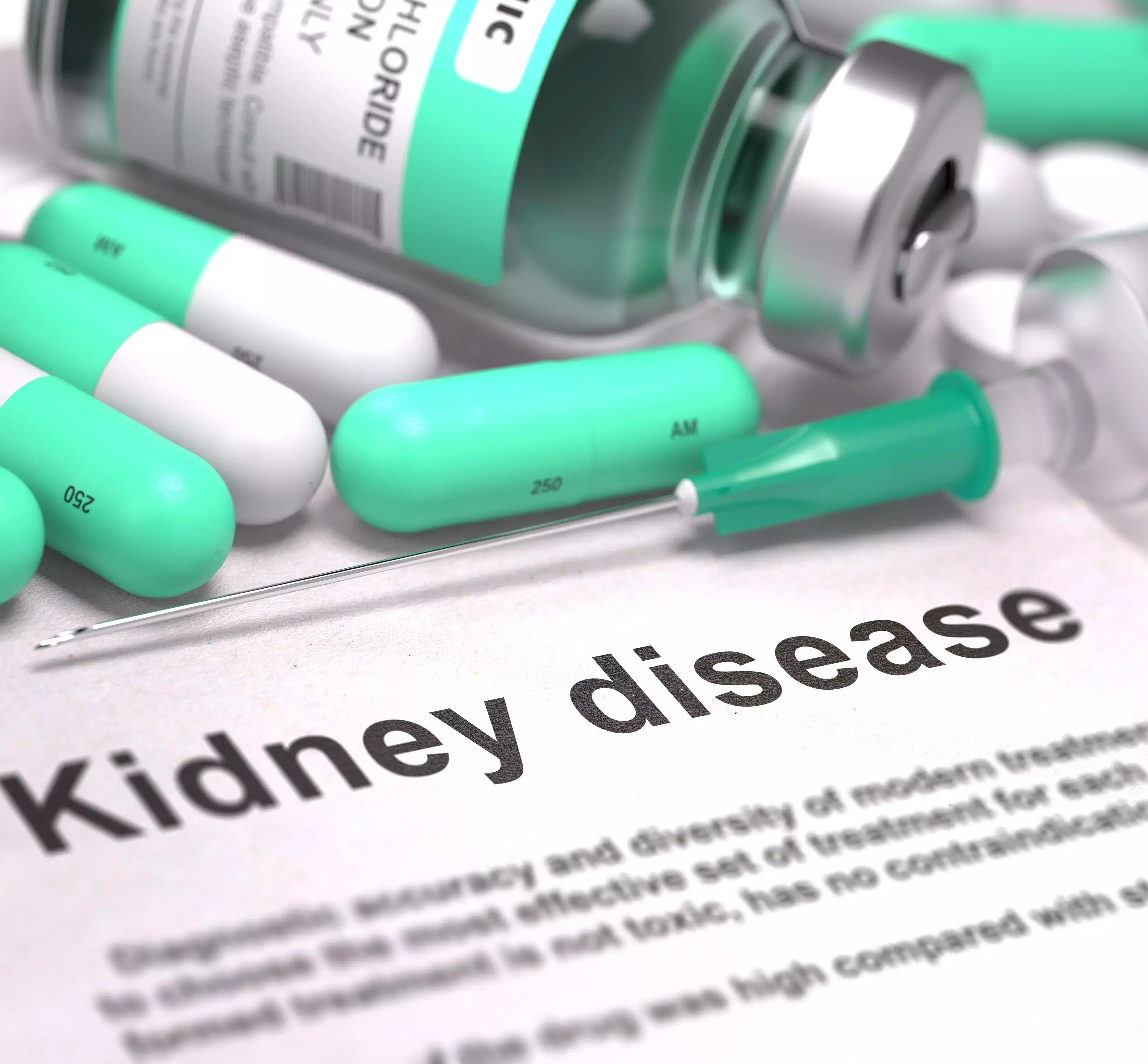HbA1c stability tied to lower risk for Alzheimer’s disease and related dementias
Powered by WPeMatico
Powered by WPeMatico
Powered by WPeMatico
Powered by WPeMatico
Powered by WPeMatico

Bhubaneswar: The Indian Council of Medical Research (ICMR) has initiated the National Health Research Priority Project to enhance emergency care systems, focusing on the immediate treatment of patients experiencing heart attacks or brain strokes, officials said on Wednesday.
The project will initially launch as a pilot in five locations- Puri (Odisha), Ludhiana (Punjab), Vidisha (Madhya Pradesh), Vadodara (Gujarat), and Pondicherry.
According to a PTI report, a three-day national consultation conference, involving the stakeholders, was held at AIIMS-Bhubaneswar to fix the modalities of the project, officials said.
The project work was formally launched in Puri from the conference that concluded on Tuesday.
Also Read:ICMR releases 32 new standard treatment workflows for common, serious diseases
While ICMR will fund the project, AIIMS-Bhubaneswar will provide technical support and the state government will take care of the logistics and manpower.
The project is aimed at enhancing emergency care by improving logistics, boosting healthcare provider competencies, integrating IT and AI tools, and mapping facilities, AIIMS-Bhubaneswar Executive Director Doctor Ashutosh Biswas said, news agency PTI reported.
The key components of the project include improving ambulance services, increasing community demand, and training first-level responders, he said.
“The project will address seven critical emergencies — heart attack, brain stroke, trauma, snake bite, poisoning, respiratory emergencies, and neonatal and maternal emergencies,” he added.
A research team, led by AIIMS-Bhubaneswar additional professor doctor Arvind Kumar Singh, has been formed to develop and implement this model in collaboration with the state government, officials said.
Medical Dialogues team had earlier reported that the apex medical research regulator, the Indian Council of Medical Research (ICMR) has released 32 new Standard Treatment Workflows (STWs) for common and serious diseases. It is developed in collaboration with the National Health Authority (NHA) and WHO India. The new STWs cover five specialties, including cardiothoracic vascular surgery, paediatric cardiology, interventional radiology, neurosurgery, and orthopaedics, adding to the 125 STWs previously released across 23 specialities in 2019 and 2022.
Powered by WPeMatico

New Delhi: The Government of India has taken many initiatives to combat Antimicrobial Resistance (AMR). The initiatives include constitution of a National Task Force on AMR Containment in 2010 leading to development of the National Policy on AMR containment in 2011.
The Government launched the National Programme on AMR Containment in 2013. Union Health Ministry has taken the following steps to combat Antimicrobial Resistance (AMR):
National surveillance networks including laboratories from across the country have been established and are generating National AMR Surveillance reports annually and also submitting data to the Global AMR Surveillance System (GLASS).
Also Read:IMA Launches National Alliance of Medical Professionals to Combat Antimicrobial Resistance
Awareness material on judicious use of antimicrobials and hand hygiene and infection prevention has been developed and shared with various stakeholders.
National Guideline on Infection prevention has been launched and translated to training material. Training of trainers held for all States and UTs. Trainings are being further cascaded in States.
To promote judicious use of Antimicrobials, surveillance of Antimicrobial use has been initiated at tertiary care hospitals.
Ministry of Health & Family Welfare launched the National Action Plan on AMR (NAP-AMR) in 2017 which was developed in alignment with the Global Action Plan on AMR. The Action Plan is being implemented by various stakeholder Ministries. The duration of NAP AMR was for 5 years.
Following National expert consultations were held towards development of NAP-AMR 2.0 in 2022:
The consultations were held for the human health sector, research sector, professional associations and civil society organizations, environment and animal husbandry sectors.
Each consultation was attended by experts who represented with the private sector, technical institutions, professional groups, industry, cooperatives, NGOs, International partners and other relevant organisations.
Objectives of these consultations included undertaking SWOT (Strength, Weaknesses, Opportunities and Threats) analyses across various sectors in context of the existing NAP-AMR and beyond as well as proposing the structure and contents of the proposed NAP 2.0. and to recommend essential elements of AMR research policy and research agenda of the country under NAP 2.0.
Integrated Disease Surveillance Program (IDSP) is an important program under National Health Mission for disease surveillance in the country. IDSP is implemented in all 36 States/UTs. The program is responsible for the surveillance of 33 plus epidemic prone diseases. The surveillance tool consists of S (Syndromic) form filled by Auxiliary Nurse and Midwife (ANMs) at the Sub-centre level, P (Presumptive) form filled by medical officers at health facility level and L (Laboratory confirmed) form filled by laboratories as per standard case definitions. Every State has designated laboratories like District Public Health Laboratories (DPHLs), State Referral Laboratories (SRLs) under IDSP for investigation and surveillance of these diseases.
In the year 2021, to strengthen the disease surveillance in the country the programme has shifted from a paper-based, aggregate, weekly reporting to a paperless, case-based, near real-time reporting through Integrated Health Information Platform (IHIP) where all the 36 States/UTs are reporting. IHIP is an information platform that integrates data from various “registries” to provide near real-time information on health surveillance from all across India for decision-makers to take appropriate public health action. IHIP provides Geotagging of the individual cases reported in outbreaks for visual geospatial analysis, along with heat map.
IDSP performs media scanning & verification of print and electronic media to strengthen the event-based surveillance. Artificial Intelligence is also used in Media Scanning and Verification to detect early warning signals and generate alerts for the timely management of potential outbreaks.
The Government through the National Centre for Disease Control (NCDC) has collaborated with various International Organizations/Countries to address AMR and enhance disease surveillance. The details of collaboration with International Organizations/Countries are attached at Annexure.
NCDC is coordinating the National AMR surveillance network under which State Government medical college hospitals/laboratories are being strengthened for AMR surveillance and containment. Trainings are held round the year for AMR data management using the offline software WHONET. Capacity building is also done on specialized lab testing procedures. Trainings have been imparted to healthcare workers on Infection prevention and control.
The India-US Centre for Disease (CDC) collaboration has focused on AMR surveillance activities, development of Standard operating procedures (SOPs) for AMR surveillance and data management, use of WHONET software, digital trainings using ECHO platform for standardization of bacteriology testing procedures across the network. CDC has also supported the ICMR-AIIMS project for HAI surveillance. Collaboration with United States Agency for International Development (USAID) is focused on strengthening AMR containment in 6 States.
Under Indo-Netherlands collaboration, pilot project was conducted on integrated AMR surveillance with one health approach in Krishna district of Andhra Pradesh.
UK’s Fleming Fund phase 1 grant for which WHO India was the implementing partner has supported National Training of trainers on IPC and strengthening 3 State AMR surveillance networks in the country and Point prevalence survey on antibiotic use in tertiary care hospitals.
Under India-Denmark collaboration, India has recently developed plan of action plan for technical collaboration on AMR.
Powered by WPeMatico

India: A study published in Diabetes and Metabolic Syndrome: Clinical Research and Reviews revealed that incorporating structured yoga intervention with standard lifestyle measures substantially lowers the risk of type 2 diabetes in prediabetics compared to solely following lifestyle measures.
“A structured Yoga intervention consisting of select yoga asanas and Pranayama performed daily for 40 minutes is effective in prevention of type2 diabetes,” lead author, Sri V. Madhu from the Centre for Diabetes, Endocrinology, and Metabolism at the University College of Medical Sciences, GTB Hospital, told Medical Dialogues.
Adding that, “This is the first randomized controlled trial with adequate power to demonstrate the long-term efficacy of yoga over 3 years in close to 1500 individuals with Prediabetes.”
Yoga, a practice with centuries-old roots in India, is widely recognized as a holistic approach to health and wellness. It is effective in the management of several lifestyle-related disorders, including diabetes. The global burden of type 2 diabetes is immense, with India alone accounting for over 77 million individuals with diabetes and an even greater number with prediabetes, who are at significantly higher risk for developing type 2 diabetes. Lifestyle interventions remain the most effective strategy for diabetes prevention.

In the study, Dr. Madhu et. al. aimed to assess the long-term effectiveness of yoga practice in reducing the risk of type 2 diabetes.
“The major implications both for clinical practice as well as public health and national policy. At a clinical level, it can be a useful approach to manage prediabetes. However, the public health implications are far-reaching and can serve as a game changer for diabetes prevention in the country. If implemented as a national policy for diabetes prevention it can go a long way in controlling the rapidly rising epidemic of type 2 diabetes in our country.” Dr. Madhu said.
In this study, an open-label randomized controlled trial was conducted at five medical centers. Adults diagnosed with prediabetes via an oral glucose tolerance test were randomly assigned to either a structured yoga intervention group, which included 40 minutes of specific yoga asanas and pranayama in addition to standard lifestyle measures, or a control group that received only standard lifestyle measures.
The primary outcome, the incidence of diabetes, was compared between the two groups after the 3-year intervention period using an intention-to-treat analysis. A total of 974 individuals were randomized (488 to the yoga + lifestyle group-group1 and 486 to the Lifestyle alone group-group2).
The key findings of the study are as follows:
• After 3 years of follow-up, there was a 39.2% reduction in the relative risk of diabetes in the yoga group (11.5%) compared to the lifestyle measures alone group (18.9%).
• The Cox proportional hazard model analysis showed that the lifestyle measures alone group had a significantly higher odds ratio of 1.74 for developing diabetes compared to the yoga group.
• Adherence to yoga was high, with 77% of individuals practicing yoga more than 75% of the time.
Commenting on the effectiveness of yoga for diabetes prevention Dr. Madhu commented “Yoga and standard lifestyle measures showed a 39.2% reduction in the relative risk of incident diabetes over 3 years compared to standard lifestyle measures alone in this study. Yoga fares better when compared to the only 2 available diabetes prevention trials carried out in the country. While the Indian DPP showed a relative risk reduction of approximately 28% with lifestyle measures, the other study using lifestyle and stepwise addition of metformin reported a 32% reduction in the risk of diabetes. Yoga performed better than both.”
“The novelty of the study lies in the fact that this is the first time that yoga, an ancient Indian practice, has been convincingly shown to prevent diabetes in a well-designed long-term trial.”
He concluded that “incorporating yoga with standard lifestyle practices significantly lowers the risk of developing type 2 diabetes compared to relying on lifestyle practices alone.”
“Additionally, the study showed that particular demographics or subgroups within the study population benefited more from yoga in terms of diabetes prevention. Yoga worked better in older individuals and women and in those prediabetic persons who had IGT or HbA1c levels greater than 6%.”
The study has a few limitations. It did not include biomarkers of stress, insulin resistance and inflammation that could have thrown light on the possible mechanisms of the reported benefit. The study was restricted to Indians and needs to be replicated in other populations in the world before it can be taken up as a global strategy.
Reference:
Madhu, S. V., Rao, P. V., Chandalia, H. B., Jothydev, K., & Gupta, A. (2024). Yoga and prevention of type 2 diabetes – The Indian Prevention of Diabetes Study (IPDS). Diabetes & Metabolic Syndrome: Clinical Research & Reviews, 18(7), 103088. https://doi.org/10.1016/j.dsx.2024.103088
Powered by WPeMatico

Hyderabad: One patient of ESIC Sanatnagar, Hyderabad saved 3 other patients’ lives. ESIC Super Specialty Hospital, Sanathnagar achieved a landmark feat in the field of medical science and organ transplantation.
On 06.08.2024, the hospital successfully conducted its first in-house cadaver (deceased patient) organ retrieval, marking a significant advancement in its medical services capabilities and commitment to saving lives.
Donor was a 45 years male declared Brain dead in ESIC hospital, Sanatnagar, Hyderabad. The hospital’s neurosurgery team headed by Dr. Samson, counselled and educated the attendants about noble organ donation and the due consent for donation was given.
Organs were allotted by Jeevandhan to ESIC. One recipient of one kidney was a 50 years old female patient, a beneficiary of ESIC, who was on dialysis since last 4 yrs. The liver and one more kidney were allotted to Osmania General Hospital, where two more recipients got the advantage of the donor’s organs and in the process their lives were also saved Organs were harvested by Dr Madhu, Dr Sandeep and their teams. Donor transplant at ESIC hospital, Sanathnagar was done by Dr Jagdeeshwar and Dr Pandu Ranga Rao, chief transplant surgeons. Anesthesia team was headed by Dr Nagarjuna and Nephrology team was headed by Dr. Dhanalaxmi.
Now one more avenue is opened for ESIC where it can get allotted share of organs from Jeevandhan and thus more patients can get transplanted the required organs and lead healthy normal active lives. This ground-breaking procedure, executed with precision and care, involved the retrieval of kidney from a cadaver, which was then transplanted into the Insured Person in need.
This achievement not only underscores the hospital’s dedication to encouraging organ donation and for enhanced transplantation services, but also demonstrates its ability to perform complex medical procedures of highest standards.
The in-house cadaver organ retrieval process involved meticulous planning and coordination among teams of doctors, administration, nurses and para-medicals. This achievement highlights the hospital’s advanced infrastructure and the expertise of its dedicated medical professionals, ensuring that the entire process, from retrieval to transplantation, is handled with utmost efficiency and compassion.
ESIC Super Specialty Hospital, Sanathnagar, Hyderabad remains committed to advanced healthcare services and for improving ESI beneficiaries’ outcomes through innovative practices and cutting-edge technology. The successful execution of this procedure reflects the hospital’s ongoing efforts to enhance its capabilities and provide superior medical care to the community.
Powered by WPeMatico

Researchers have found that pregnancies in patients with Osteogenesis Imperfecta (OI) generally result in healthy, full-term births with few complications, according to a new nationwide, register-based cohort study conducted in Denmark. This study was published in the journal Bone conducted by Emilie K. and colleagues.
Osteogenesis Imperfecta (OI) is a hereditary bone disease characterized by brittle bones and an increased tendency to develop fractures. Due to such complications, doubts have been made regarding the safety of pregnancy in OI subjects. In this way, this was the first study designed to investigate the risk of complications related to pregnancy, delivery, and offspring when one of the parents has OI.
This study was based on Danish health register-based data from 1997 to 2018. The population had all pregnancies where either the mother or father suffered from OI, compared with a reference population comprising all other pregnancies in the general population. The data was analyzed by descriptive epidemiology.
The key findings of the study were:
OI-associated pregnancies in 433 cases, where 134 mothers and 73 fathers had OI.
And the number of incidences of complications related to pregnancy and childbirth, like pre-eclampsia, eclampsia, and perinatal hemorrhage, were about the same in the OI cohorts as in the normal population.
More children were delivered by cesarean section in the OI cohort (31%) compared to the reference population (19%).
The study found no significant increase in complications among offspring, including low birth weight, low Apgar scores, the need for CPAP or NICU, congenital malformations, incidence of OI, birth-related fractures, or hospital contacts during the first year of life.
The results show that pregnancies in OI patients are not more at risk than the population. This is very important, taking into consideration the fear of complications that may deter one with OI from ever trying to fall pregnant. The increased rate of cesarean section within the OI cohort of this study is significant, but this was not reflected in increased rates of bad outcomes for mother or baby.
In general, pregnancies with a partner or parent affected by osteogenesis imperfecta result in live births at term with very few complications. This study provides reassuring evidence that, despite the inherent challenges of OI, pregnancy can be safely managed in this population.
Reference:
Lykking, E. K., Damkier, P., Kammerlander, H., Broe, A., & Folkestad, L. (2024). Pregnancy complications and birth outcome in patients with osteogenesis imperfecta – A population-based register study. Bone, 117202, 117202. https://doi.org/10.1016/j.bone.2024.117202
Powered by WPeMatico

Low-dose spironolactone found Effective for Proteinuria Reduction in IgA Nephropathy, suggests a study published in the Kidney Blood Press.
It′s crucial to utilize combination therapy for IgAN patients to reduce proteinuria and maintain stable kidney function. We demonstrate the safety and efficacy of low-dose spironolactone in management of IgAN patients. Methods: Adult IgAN patients treated with spironolactone were evaluated. Patients were separated into two categories according to whether 24h-proteinuria was reduced by more than 20% after two-months of spironolactone treatment compared to baseline levels. Results: 88 patients were analyzed and 24h-proteinuria decreased from 0.93g to 0.70 g (p<0.001) after two-months of treatment with spironolactone, accompanied by a slight decrease in EPI-eGFR from 75.7 to 73.9 mL/min/1.73 m2 (p = 0.033). Intriguingly, 47 patients in effective MRA group showed less endocapillary hypercellularity (p = 0.040). In ineffective group, 18 patients discontinued MRA treatment because of 24h-proteinuria increased from 0.83 g to 1.04 g, while the other 23 patients were continued with spironolactone and proteinuria decreased to 0.57 g in the sixth month (p = 0.001). Furthermore, 12 patients with persistent high proteinuria during prednisone therapy, were added with spironolactone. 24-proteinuria were dropped from 0.95 g to 0.73 g at the second month, and to 0.50 g at the sixth month. Conclusions: In our study, we confirmed spironolactone’s efficacy in reducing urine protein excretion in IgA nephropathy patients within two months of treatment. However, response varied among patients, with those showing endocapillary proliferation (E1) in renal biopsies having poor spironolactone responsiveness. Administering mineralocorticoid receptor antagonists (MRAs) to patients with eGFR over 30 ml/min did not result in hyperkalemia, indicating the treatment’s safety.
Reference:
Da Shang, Yi Guan, Shaojun Liu, ChuanMing Hao, Lingyun Lai; Effectiveness and Safety of Spironolactone in the Treatment of IgA Nephropathy: A Retrospective Self-Controlled Study. Kidney Blood Press Res 2024; https://doi.org/10.1159/000540283
Keywords:
Low-Dose, Spironolactone, Effective, Proteinuria, Reduction, IgA, Nephropathy, study, Kidney Blood Press, IgA Nephrology, Proteinuria, Spironolactone, Renal function, Da Shang, Yi Guan, Shaojun Liu, ChuanMing Hao, Lingyun Lai
Powered by WPeMatico
